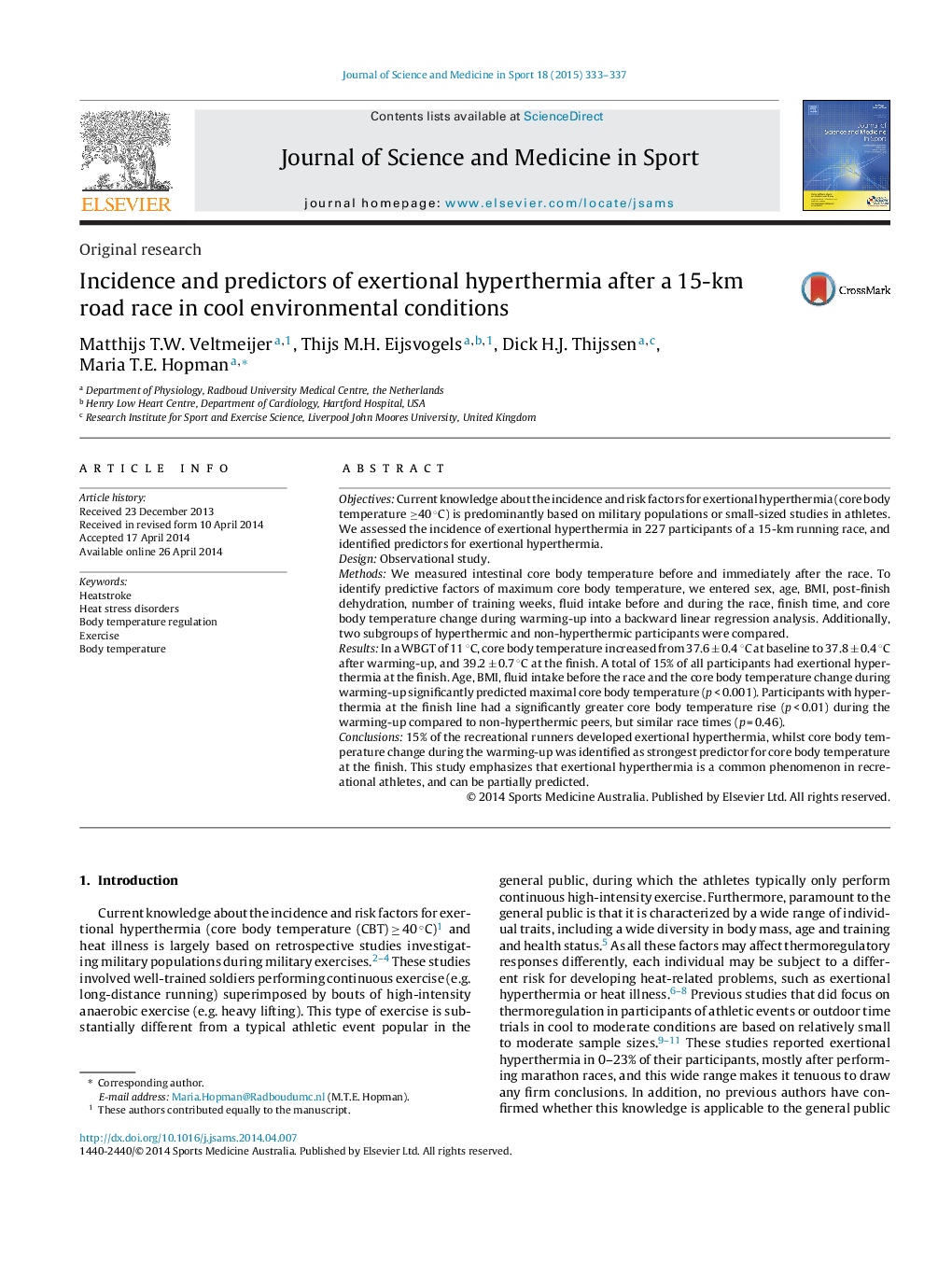| کد مقاله | کد نشریه | سال انتشار | مقاله انگلیسی | نسخه تمام متن |
|---|---|---|---|---|
| 2702769 | 1144560 | 2015 | 5 صفحه PDF | دانلود رایگان |
ObjectivesCurrent knowledge about the incidence and risk factors for exertional hyperthermia (core body temperature ≥40 °C) is predominantly based on military populations or small-sized studies in athletes. We assessed the incidence of exertional hyperthermia in 227 participants of a 15-km running race, and identified predictors for exertional hyperthermia.DesignObservational study.MethodsWe measured intestinal core body temperature before and immediately after the race. To identify predictive factors of maximum core body temperature, we entered sex, age, BMI, post-finish dehydration, number of training weeks, fluid intake before and during the race, finish time, and core body temperature change during warming-up into a backward linear regression analysis. Additionally, two subgroups of hyperthermic and non-hyperthermic participants were compared.ResultsIn a WBGT of 11 °C, core body temperature increased from 37.6 ± 0.4 °C at baseline to 37.8 ± 0.4 °C after warming-up, and 39.2 ± 0.7 °C at the finish. A total of 15% of all participants had exertional hyperthermia at the finish. Age, BMI, fluid intake before the race and the core body temperature change during warming-up significantly predicted maximal core body temperature (p < 0.001). Participants with hyperthermia at the finish line had a significantly greater core body temperature rise (p < 0.01) during the warming-up compared to non-hyperthermic peers, but similar race times (p = 0.46).Conclusions15% of the recreational runners developed exertional hyperthermia, whilst core body temperature change during the warming-up was identified as strongest predictor for core body temperature at the finish. This study emphasizes that exertional hyperthermia is a common phenomenon in recreational athletes, and can be partially predicted.
Journal: Journal of Science and Medicine in Sport - Volume 18, Issue 3, May 2015, Pages 333–337
